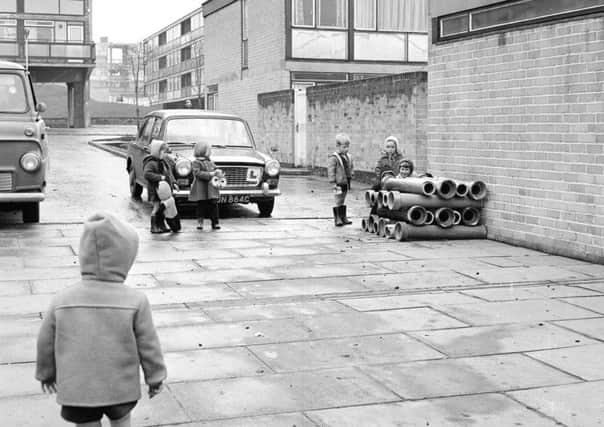A childhood of freedom '“ not trapped in a concrete jungle


But one architectural historian is arguing that the derision the town attracts is rather unfair.
And Diane Watters will tell you more if you join her and fellow author Miles Glendinning on a walking tour, Utopia to Carbuncle.
Advertisement
Hide AdAdvertisement
Hide AdThe tour on May 21 is part of ReimagiNation, an off-shoot of the Edinburgh Book Festival which is touring Scotland’s new towns, looking at their history through a mix of talks, readings and special events.
Diane said: “There’s this media-generated idea that sees this environment as a sterile, concrete jungle – but it’s much more complex than that.”
Diane, a lecturer at Edinburgh University, is speaking from personal experience. having moved to Cumbernauld as a child with her family from a tenement flat in Govanhill.
The family was given a new three-bedroom house in Kildrum – but only after an inspection to establish levels of cleanliness. Family stories suggest this included checking under all the beds.
Advertisement
Hide AdAdvertisement
Hide AdBorn in 1967, her childhood memories are very different from being trapped in a concrete jungle – on the contrary, she remembers happy days, full of fresh air and freedom.
“Cumbernauld was different from East Kilbride in that it had houses that were tightly packed together but they looked out on to countryside,” said Diane.
“Yes, Cumbernauld had its problems but I don’t think you can just blame the architecture for those.”
In the early days, the town also boasted many awards – but they couldn’t have been further from the infamous Plook on a Plinth.
Advertisement
Hide AdAdvertisement
Hide AdThe plaudits it received were for innovation, a bold new town at the cutting edge of architecture.
In 1967 the town won the prestigious American Institute of Architects R S Reynolds Award for Community Architecture and almost every week saw a dozen visitors or more from all over the world visit.
Diane’s overwhelming memories are the freedom she had as a child thanks to the town’s careful planning to keep pedestrians and drivers apart.
She remembers being part of the ‘shoals of children’ roving about for miles together, feeling safe.
“The way it was planned you could walk everywhere.
Advertisement
Hide AdAdvertisement
Hide Ad“You were shoved out in the morning and came back for lunch – it was a very carefully planned, safe environment,” she recalled.
She also looks back with affection on her school days at the now demolished Kildrum Primary.
One of the ways the new town looked to the future was in its deliberate bringing together of Catholic and Protestant children – the schools may have been segregated but the communities were not.
The tour takes in Kildrum and Seafar, partly because they were the original ‘new town’ design but also because Diane knows them so well, describing them as her ‘old stomping ground’.
Advertisement
Hide AdAdvertisement
Hide AdThe tour will start at Kildrum’s Sacred Heart Church and finish at St Mungo’s, both striking examples of the modernist architecture that came to define Cumbernauld.
“I’ve been doing these tours for years but somehow people are more interested now!” said Diane.
“In the 1990s, we were really up against it as people reacted against the post-war architecture. Then in the early 2000s, there were all these ‘anti-awards’.
“But these days, many of the original buildings are being demolished and I think there is a nostalgia now that’s promoting more interest.”
Advertisement
Hide AdAdvertisement
Hide AdThe demolition of the tower blocks sparked a huge wave of nostalgia. Perhaps many, like Diane, remembered their own happy childhoods through the dust of demolition.
At the end of the tour there will be time for more nostalgia with an exhibition in St Mungo’s. It will later move to the Muirfield Centre.
Diane is not denying Cumbernauld had its problems. The underpasses that gave her freedom as a child became threatening as a teenager.
“They became quite problematic but that’s the case in any town,” she said.
Advertisement
Hide AdAdvertisement
Hide AdOne of the biggest problems was Cumbernauld never got the jobs that had been integral to the plan.
“It was never meant to be a dormitory town,” said Diane. “But for lots of different reasons, it didn’t get the manufacturing or the investment promised.”